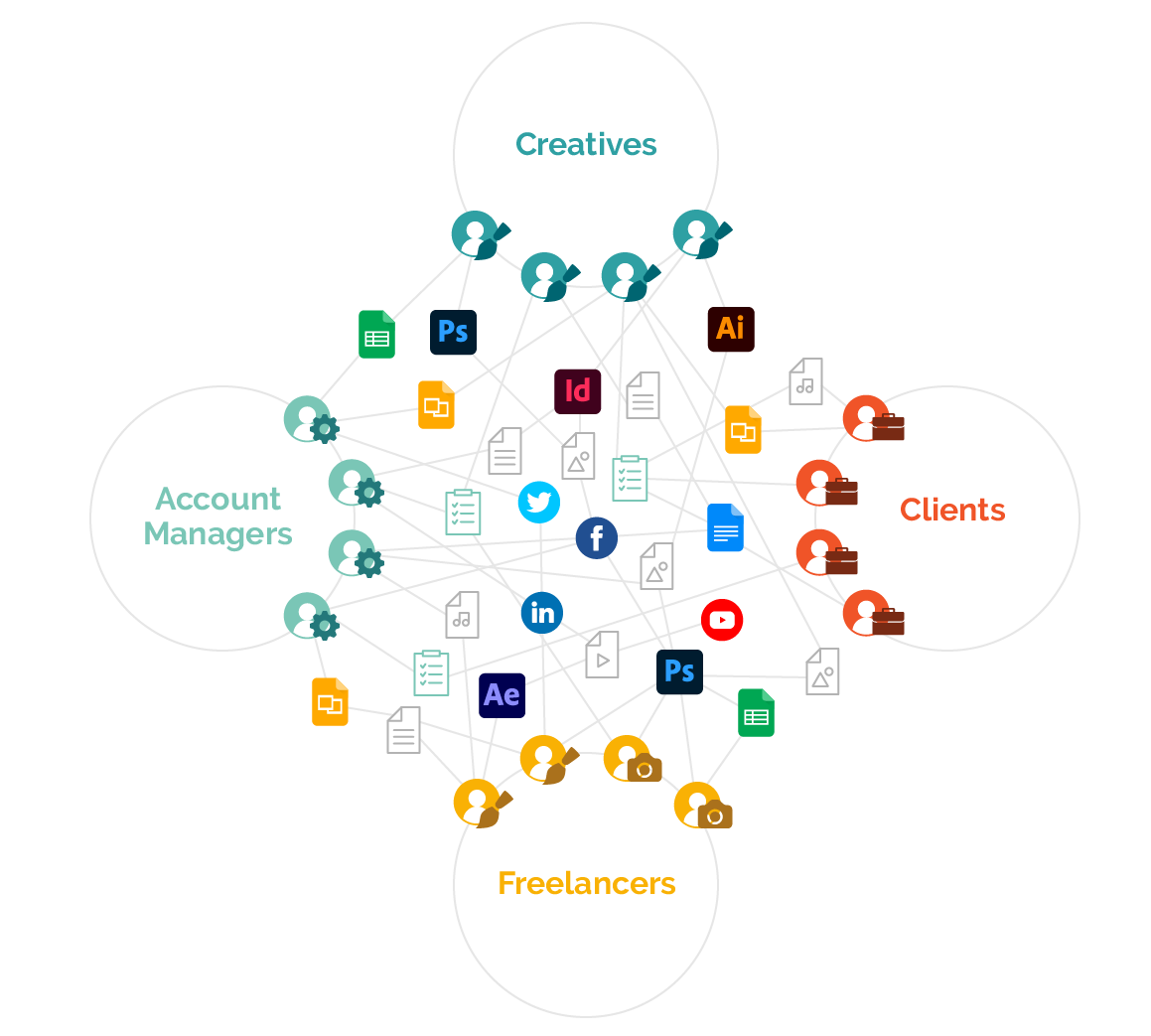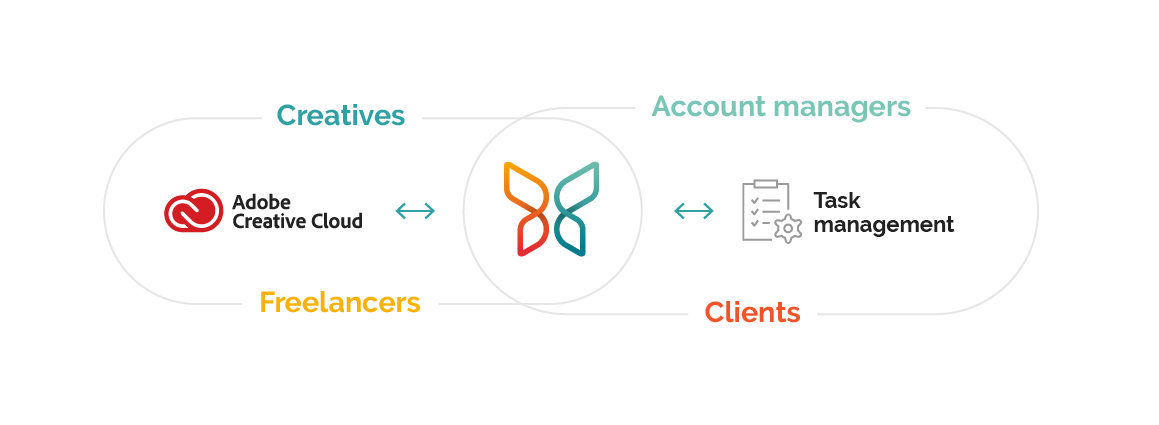The speed at which teams are expected to work, the volume of work required, the increasing number of marketing channels, client communication, and adapting to new technologies that change the way teams work are seen as key challenges. Almost certainly related to these, retaining and supporting creative staff is also seen as a key challenge.
These challenges are not to be underestimated. But what if there was a way to not only overcome them, but use them to your strategic advantage - enabling you to grow and thrive even as marketing budgets shift online and Covid wreaks havoc?
Creation is at the heart of agency life
Every day, agencies around the world create and share countless concepts, images, designs, copy, content, video, and other expressions of creativity. And from the freelancer working in their makeshift office to the largest agency in New York or Shanghai, every one of these types of creativity needs to pass through some kind of workflow. Frequently, approved versions need also to be available to select people inside and outside the agency, and older versions need to be taken offline so that they are not inadvertently used.
Sometimes, these workflows are simple - a small team with a copywriter, designer, and client, for example, can work together on a Google Doc and Adobe CC to efficiently create any collaterals they need. But more often than not, tasks, workflows, and approval processes are ad hoc and involve different stakeholders. Frequently, different tools are used. And even for large teams working on recurring projects such as magazine-style content, different stakeholders or other unforeseen events can disrupt what would otherwise be predictable workflows.
Slaying the Content Spaghetti dragon
These unstructured, or under-optimized workflows are what we at WoodWing call “content spaghetti.” We use the term “spaghetti” since it neatly describes the loose ends, lack of structure and visibility, and general mess.

Content Spaghetti in an agency setting
Content spaghetti puts pressure on people. If we look at the results of the survey above, speed, volume, challenges around creating for different channels, working with new technology, and even client communication issues are results of content spaghetti. And the pressure it puts on people is one of the reasons agencies have a challenge retaining talent and building sustainable businesses. But Content Spaghetti is also a massive, underleveraged opportunity to ease these pressures and improve productivity.
Orchestrate your way to growth
As content spaghetti is the problem, the opposite - people and tools working seamlessly together to plan, create, manage, and distribute content - is the solution. We call this approach “Content Orchestration,” and it can help agencies solve not only the immediate challenges around content spaghetti, but also thrive in this challenging environment.
1. View technology as an ongoing investment
A strong technical setup will be a modular system, made up of integrated tools for different parts of the creative value chain, such as task management, design, copy and content, file sharing, and so on. These tools drive efficiency by being tightly integrated with one another - enabling your creative, account, and even external stakeholders to work primarily within the solutions they feel most comfortable.
As new technologies or tools become available, individual parts of this system may be upgraded or swapped, so this kind of setup requires ongoing investment and collaboration with your IT team.

A simple, hypothetical example of Content Orchestration for agencies
2. Leverage your hive mind for efficiency gains
According to workflow expert Kilian Schalk, “most organizations don’t take advantage of the resources and knowledge they have within their own teams. A huge amount of expertise regarding workflows and how to improve them goes untapped if there is no structured way to get it out of people’s heads and into practice.” Speaking to people with their hands on the work and getting their insights into where workflows break down and how they can be improved can already provide a number of ways to streamline and strengthen your creative processes.
3. Test small-scale ways to improve before rolling out to a wider group
You may consider working with one team or unit to test out new tools, gather feedback, and identify best practices before rolling out to the wider organization. This will give you the opportunity to iron out kinks before large-scale deployment. But there is another advantage. Your users will generate word-of-mouth buzz internally that will inspire enthusiasm and buy-in prior to rollout. As your first iterations roll out, it’s important to continue to gather feedback from users, optimize workflows, and look for areas to improve.
In agency land pitches are won and lost on how creative ideas solve clients’ business problems, and the value of the agency is judged on the quality of its creative execution. If there is little to separate creative ideas and expertise, pressures on margins and people follow. With Content Orchestration, improved efficiency, tried-and-tested workflows, and battle-tested, integrated systems can be a key differentiator to win and retain business.



